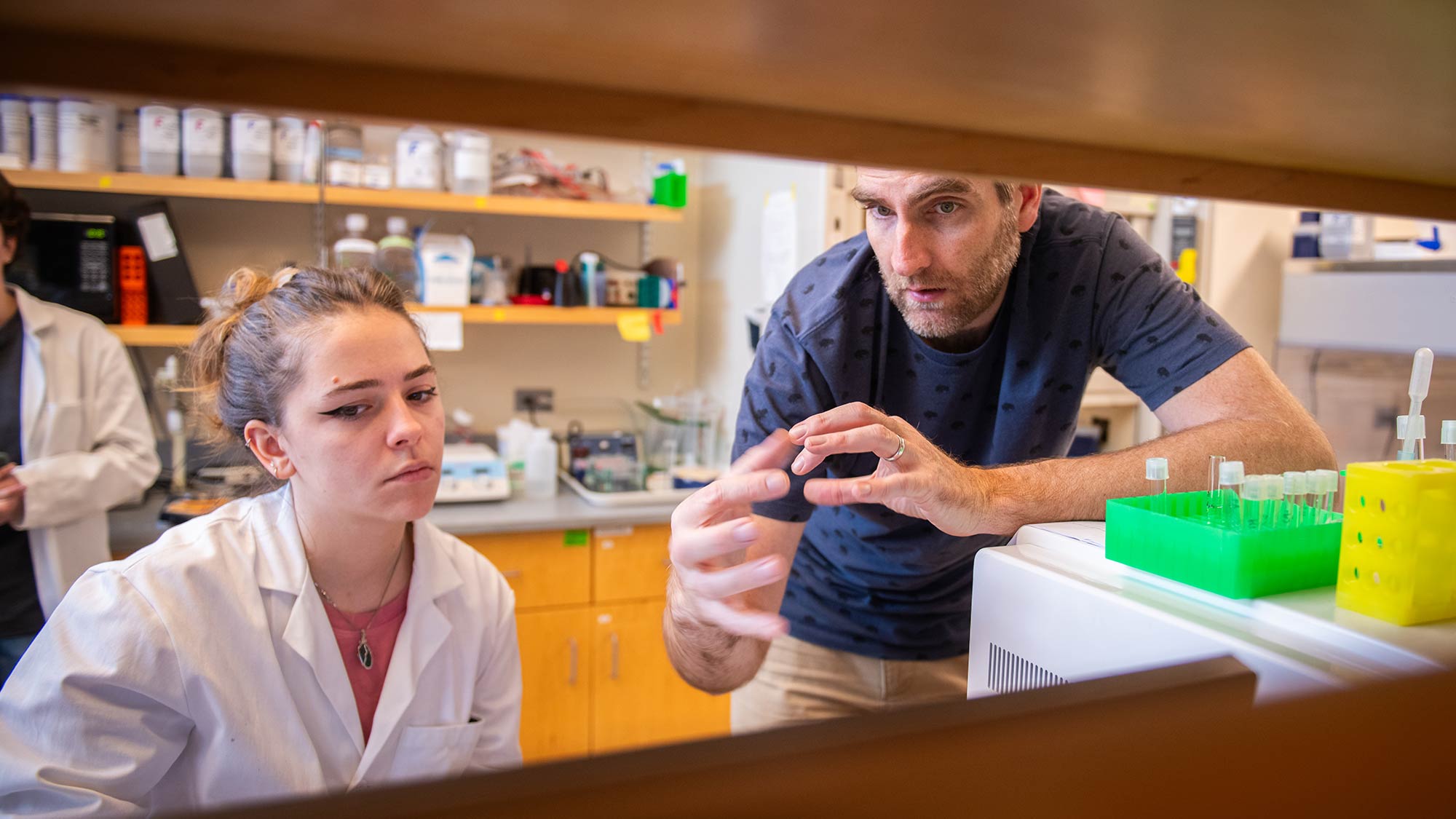Biology Professor Nathan Ahlgren is investigating how iron nourishes and shapes the adaptation of Synechococcus, one of the most abundant phytoplankton in the ocean and a key driver to the photosynthesis that generates as much as 15 percent of the oxygen we breathe. Backed by a $1.56 million National Science Foundation Early Career Development grant, Ahlgren is investigating “how iron, as a nutrient, shapes the Synechococcus community structure and how these organisms adapt to deal with differing iron nutrient conditions.”

“Climate is always present in the background of our research.”
Synechococcus is a type of marine cyanobacteria, formerly known as blue-green algae, that “form an important foundation of life in the oceans,” according to Ahlgren. At the bottom of the ocean’s food chain, “they produce organic material and oxygen, just like plants on land do.”
Yet, like all living things, cyanobacteria need iron to survive, Ahlgren says. For that important reason, scientists have focused on iron levels in the ocean, where phytoplankton play a crucial role in “controlling the amount of photosynthesis and flow of carbon dioxide on our planet,” he says.
In about 30 percent of the ocean, phytoplankton growth is limited by a lack of iron, a phenomenon that has been well studied, according to Ahlgren. Less studied is phytoplankton’s response to low, medium, or high iron levels in the rest of the ocean, he explains, and how the variability or stability of iron conditions affects phytoplankton populations, including Synechococcus.
“We hope to set the context for understanding what’s happening right now so we can start to make predictions for the future,” he explains. “If we know how iron conditions are going to change, and if iron is going to be more variable or more stable, then we might know how cyanobacteria could respond.”
Forecasting the future health of phytoplankton contributes to scientists’ broader understanding of climate change.
“Climate is always present in the background of our research,” he says, “even if it’s not the direct focus.”

